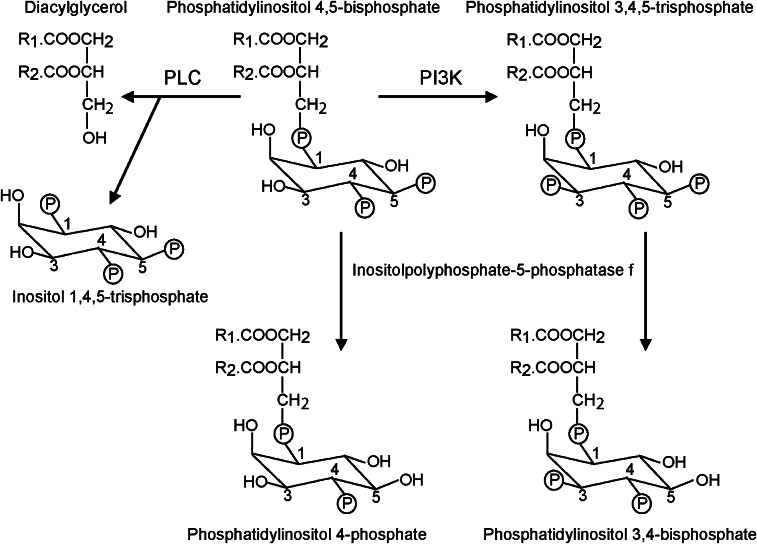Figure 5.
Relevant aspects of phosphoinositide metabolism. Phosphatidylinositol 4,5-bisphosphate (PtdIns(4,5)P2) is an important phospholipid in cell signalling producing three separate ‘second messenger' molecules. It is hydrolysed by a variety of phospholipase C (PLC) isoforms to produce diacylglycerol and inositol 1,4,5-trisphosphate. The former is the physiological activator of the diacylglycerol-regulated protein kinase C isoforms (see Figure 2), whereas the latter is important in the regulation of intracellular Ca2+ movements. In cardiac myocytes, the phospholipase Cβ isoforms are best studied in this regard. In a second signalling pathway, PtdIns(4,5)P2 is phosphorylated by phosphoinositide 3′ kinase (PI3K) to form phosphatidylinositol 3,4,5-trisphosphate (PtdIns(3,4,5)P3). This regulates the activity of the 3-phosphoinositide-dependent kinase/protein kinase B (Akt) signalling pathway (see Figure 2). Phosphoinositides are dephosphorylated (hydrolysed) by a number of lipid phosphatases. One such phosphatase which hydrolyses the 5-phosphate of phosphatidylinositol 4,5-bisphosphate and PtdIns(3,4,5)P3 is inositol polyphosphate-5-phosphatase f, which produces phosphatidylinositol 4-phosphate and phosphatidylinositol 3,4-bisphosphate, respectively.

